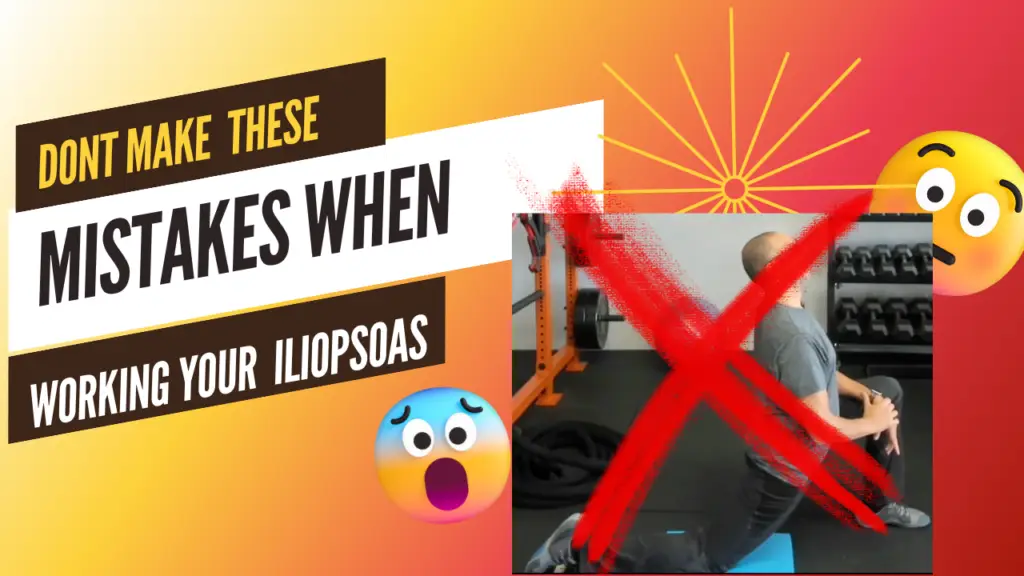If you’re dealing with iliopsoas muscle pain—sometimes called psoas pain—you’re not alone. The iliopsoas plays a critical role in how your spine, pelvis, and hips move… and when it’s tight, weak, or dysfunctional, it can cause low back pain, hip pain, bursitis, pelvic issues, and more.
But here’s the real problem:
Most people—and even many professionals—oversimplify it. They give you generic psoas stretches or strengthening exercises that don’t address the full picture.
Let’s change that.

Click on the image to watch
What Is the Iliopsoas Muscle?
The iliopsoas is a deep muscle made of multiple parts: the psoas major, psoas minor, and iliacus. It doesn’t just run from your spine to your hip—it has multiple attachments at the spine, pelvis, and upper leg, making it a true tensegrity muscle in the osteopathic model.
That means it plays a central role in connecting and coordinating movement between your upper and lower body.
It also means problems with your iliopsoas don’t stay localized—they can ripple out into your spine, pelvis, or even internal organs through fascial connections.
Why Basic Psoas Stretches Don’t Work
Search the internet and you’ll see the same stretch everywhere: kneeling lunge, arms overhead, arch the back, slide forward.
Sounds familiar?
Here’s what’s wrong with it:
- It ignores the multiple fiber directions and attachment points of the iliopsoas
- It reinforces poor spinal positioning and can compress the lumbar discs
- It fails to address fascia, which is key for actual lengthening and balance
- It’s based on basic anatomy—not the complex interconnections that actually matter
Worse, these stretches can aggravate spinal conditions and reinforce patterns that caused your pain in the first place.
A Holistic Way to Work With the Iliopsoas
To truly improve iliopsoas muscle function, you need a program that goes beyond muscle alone.
Enter Hill’s Muscle Model:
A true holistic approach includes:
- The muscle itself
- The fascia that supports and connects it
- The ligaments and joints it influences
All three work together. You can’t isolate one and expect long-term results.
What I Do Instead
As a Soma therapist and trainer with 30 years of experience—18 under the osteopathic model—I help people move and heal holistically.
Here’s how I work with the iliopsoas:
- Normalize the fascia
Fascia surrounds and runs through the psoas like a spiderweb. If it’s twisted or adhered, the muscle can’t function correctly. Manual therapy helps unwind these patterns. - Myofascial stretching
Instead of basic stretches, I use biomechanically precise postures that account for all attachments and fiber directions. These target the whole chain, not just one part. - Postural release
Sometimes, just hanging in a specific posture allows the psoas to release more deeply than any active stretch. I show clients how to do this safely and effectively. - Strengthen it—correctly
A tight muscle can also be weak. I use movement patterns that strengthen the iliopsoas in the right directions, based on how it truly functions. - Address the surrounding system
That includes spinal stabilizers like the transverse spinalis, longissimus, iliocostalis, and lats. Muscles don’t work in isolation—they work in systems.
Want to Try a Simple Postural Release?
Here’s a safe, passive way to begin releasing the iliopsoas:
- Sit on the edge of your bed or a bench
- Lie back and hold one knee to your chest
- Let the other leg hang off the edge
- Hold for as long as is comfortable
- Switch sides
This gentle release works with the body rather than forcing it.
Ready for Deeper Change?
Most iliopsoas issues don’t get better with surface-level fixes.
You need to work with the cause, not just the symptoms.
If this resonates with you, I have a few resources:
✅ Free Resource – To Get Mobile, Get Out of Pain, and Live the Life of Your Dreams
✅ Consultation – Want to work together? Book a time via the Calendly link
You’re capable of more than you think. Allow the process to change you—and you’ll be amazed at what your body can do.
Building a foundation for a better life.
Find out more @

Leave a Reply